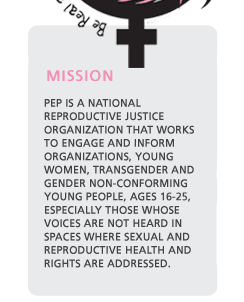Q. How many women experience pregnancy related complications each year?
A. Each year over 7% of women in the world experience pregnancy related complications that can lead to long-term illness or disability. (That's 7 million out of 210 million women who are pregnant every year.) Most of these are due to health care disparities between rich and poor women. The 3 main factors that affect a woman's ability to receive proper birthing care are: recognizing that there is a problem and the need to seek care, a delay in reaching care, and getting adequate treatment once a woman has arrived for care.
Q. How long does labor last?
A. It really depends on the woman. For some, it can be as short as an hour or two; for others, it can be up to three days. Usually, it is in the range of 15-20 hours.
Labor is broken into three stages: early and active labor, transition and pushing, and the birth of the placenta. During early and active labor, the cervix dilates and contractions gradually become longer and more frequent. The cervix, which has an opening the size of the tip of a pencil, must dilate to ten centimeters-about the diameter of a coffee can-before a woman will be able to push. With this in mind, early and active labor takes place until the cervix dilates to about eight inches, when many women start to feel the urge to push, ending with the birth of the baby. Finally, after the baby is born, she will birth the placenta.
Q. Is it better to give birth in a hospital or with a midwife? What are my options?
A. There is no one "right way" to give birth. Whether the birth takes place in a hospital, a birthing center, or at home, is between you and your healthcare providers. If a pregnancy is considered "high risk" (see below), it may be safer for both the baby and the mother to labor in a hospital. Otherwise, there are many benefits to a delivery in a birth center or at a home birth as there are in a hospital birth.
If you choose to give birth in a hospital, emergency medical care is closer at hand, but there also tend to be more medical interventions. Birthing centers, which may be free-standing or part of a hospital, are often specially equipped with birth tubs/pools for water births, birth stools (a chair with a wide, hollow bottom), among many other things. However, a good doctor, like a good midwife, will respect your "birth plan." It is all about creating a good relationship with your provider! Find someone who listens and respects your wishes for your birth.
Q. How do I know when to go to the hospital or birthing center/when to call the midwife?
A. As the contractions become more frequent and longer, the cervix dilates more. The recommended time to contact your healthcare provider is when the contractions are five minutes apart and last about sixty seconds long, for about an hour. The longer you are in the hospital, the more likely you are to have medical interventions, so it may be for the best to wait until you have sixty second contractions with five minute intervals to head to the hospital or birthing center, unless you feel that something is wrong. If you are concerned, do what makes you feel the most safe and comfortable.
Q. Should I be lying down to labor and give birth?
A. You should do whatever is most comfortable, but contrary to popular conception, "most comfortable" usually isn't lying on your back. When you lie down, your body is not working with gravity, so labor may prove more difficult. Some women give birth sitting in a bathtub, others on a chair, or on the toilet (don't worry; during transition and pushing there is always a nurse or midwife near you at all times... if they're not in the bathroom with you already, yell loudly if you start giving birth on the toilet). Some women even naturally start kneeling or squatting, which lessen the need for an episiotomy [see below].
Q. What are my options for pain medication?
A. You have several options. The first, and most well-known, is the epidural. The epidural is an anesthetic that is put, in a capsule, directly into the spinal column, between the vertebrae and the spinal cord. It continuously releases the pain medication, and essentially numbs the patient from the waist down. The medication must be given by an anesthesiologist. There are also subcutaneous (muscle shot) injections that offer a relief from pain without the complete numbing affect of an epidural. Nubane is an example of this kind of medication, and may often be a good alternative for those who are considering medication but do not want an epidural.
Q. What is an episiotomy? What is a cesarean section?
A. An episiotomy is an incision made on the perineum (the skin between the vagina and the anus) to make room for the baby's head at the very end of childbirth. Episiotomies help prevent unnecessary tearing, though they are often not necessary at all. A cesarean section, or a cesarean birth, occurs when a woman is unable to deliver vaginally. An incision is made in the abdomen, and then the uterus, where the baby is. The doctor lifts out the baby and the placenta and then closes the incision.
Q. What is a VBAC?
A. A VBAC is a Vaginal Birth After Cesarean section. There are several arguments on both sides as to whether a VBAC is a safe medical procedure for women. If you're considering a vaginal birth after you've had a cesarean section, you should be able to find a provider who will help you make a choice that's right for you, including the choice to have a vaginal birth.
Q. How can a pregnancy be "high risk?"
A. If the baby is breached (the head is not at the birth canal), if the baby is too big for the pelvis, if the placenta and birth cord prolapse (loosen away from the uterine wall and fall below the baby's head), or if the mother has medical issues such as gestational diabetes (diabetes only during the 37 weeks of pregnancy) or issues concerning a high rise in blood pressure (hypertension, toxemia, or preeclampsia).
Q. What are medical interventions in childbirth?
A. Medical intervention means the use of surgery or medicine during pregnancy or labor. A medical intervention can be as big as a cesarean section [see below] or as small as a fetal heart monitor, which is used when contractions progress as a means of "checking in" on the baby. Other medical interventions include a medication called pitocin to induce labor, and numbing shots that called epidurals to relieve pain [see card on pain medications].
Q. When are medical interventions in childbirth necessary? When are they unnecessary?
A. Medical Interventions are necessary for emergencies, including "fetal distress." Fetal distress is when the baby becomes fatigued by the labor, or seems to be anxious or unwell. Signs or symptoms may include an increased or decreased heart rate, meconium (fetal waste products) in the amniotic fluid, or decreased movement. Bigger emergencies can include: the prolapse of the umbilical cord- the cord falls below the baby as the cervix dilates, meaning it may begin to deteriorate and the baby will subsequently lose its oxygen source an abnormal fetal position; the baby is in a "breeched" position, or that the feet or buttocks are near the birth canal; and placental abruption- the placenta begins to pull away from the uterine wall, which can lead to heavy bleeding and/or covering the birth canal so that it will be born before the baby.
Medical interventions are unnecessary when they are used to speed up the labor, if the medical professional wants to have more "control" over the birth, or if the mother hasn't been able to try other methods first, such as breathing and positioning techniques, if she wants to.
Q. What are my birthing rights as a young woman?
A. A young woman's legal rights are no different than any woman's. Information is power. Being an informed patient (knowing options for pregnancy and labor and finding professionals who will respect your birthing plan) is the best way to insure your rights.
Q. Where can I find more resources on pregnancy and giving birth?
A. the Patient's Bill of Rights: http://www.aimsusa.org/ppbr.htm
National Advocates for Pregnant Women: http://www.advocatesforpregnantwomen.org/ | 





